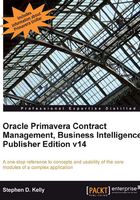
Information sent or received
Information is broken down into two main workflows: information sent from the project and information received by the project. Usually this information is sent or received in the form of a document that explains who the information is from and who the information is meant for. It is typically some sort of formalized template. Many times the same document is received into the project; it is analyzed, approved, marked up or reviewed, and then sent from the project.
Information sent
For the system to be complete, all project related information must be communicated or at least recorded through PCM. Let me say that again: all project related information must be communicated through PCM. If this best practice rule is broken, the concept of a system to hold all project related information is gone. One of the main concepts in using a system like PCM is to capture, manage, and report on any information within the project. If information is communicated in any other way, it goes to reason that all the project information is not in the same place. The biggest offender of this rule is e-mail. The reason we use e-mail so much is that it is easy and quick to use. The reason it is the worst form of communication when related to a project is it is easy and quick to use. Unless there is some mechanism to allow e-mails to be properly captured, leave e-mails to asking about the big game over the weekend. Sadly, most of the time that last statement falls on deaf ears. The following section explains how PCM can help alleviate this problem by using a project e-mail address.
With the understanding that any information that needs to be communicated should be placed in PCM and then delivered to the other party, it is perfectly fine to use e-mail as a transportation vehicle for this information. That means the information would be an attachment to the e-mail. The information (metadata) is entered into the fields of the proper module and when it is time to communicate with the receiving party you can print the template or create a PDF for e-mailing. Less and less templates require a wet signature, so creating a PDF for e-mailing is becoming the most widely used form of communication on a project.
Information received
All project related information received to the project needs to be recorded as received. In PCM this would be using the Correspondence Received module. This way, information regarding the time and date the information was received can be tracked. Once it is received into the system, the decision needs to be made as to whether the data on the communication needs to be entered into one of the modules in PCM. An example would be a response to an RFP (Request for Proposal).
The response is received and entered into the Correspondence Received module by recording the date and time it was received and so on. This type of document, of course, needs to be entered into PCM as a response to a Request in the Change Management module with the actual data elements being captured. An example of not needing to record the data elements would be if the contractor sent a revised copy of his schedule to the project. You must record that the schedule was received with a time and date but there is no place in PCM to enter schedule information (unless you are managing the schedule as a submittal). There is also a difference between formal communication and informal communication. Most companies are very specific as to what formal communication really is for a project. More and more companies are creating a project e-mail address and referencing that in their contracts for the contractor to use for formal communication. PCM can recognize one e-mail address per project that can act as the project e-mail address. If e-mails are sent to that project e-mail address PCM will receive it to the Correspondence Received module including any attachments to that e-mail. This allows for a project e-mail address to be captured in the structure of PCM. However, that is as far as PCM will take the e-mail. There needs to be a role that monitors this module for e-mails and routes the communication to the proper person.
If you understand these concepts stated in the previous paragraphs you are way ahead of most users of any type of system such as PCM. To summarize, all data being sent from the project needs to be entered into a module in PCM and then the template or form needs to be delivered to the proper parties. All communication received into a project needs to be recorded as received with a time and date and then perhaps the data elements need to be captured for management and reporting by placing that information into one of the OPC modules.